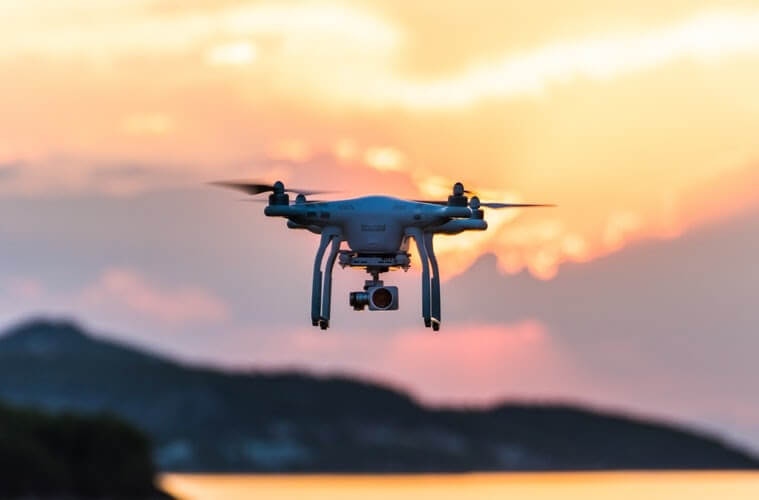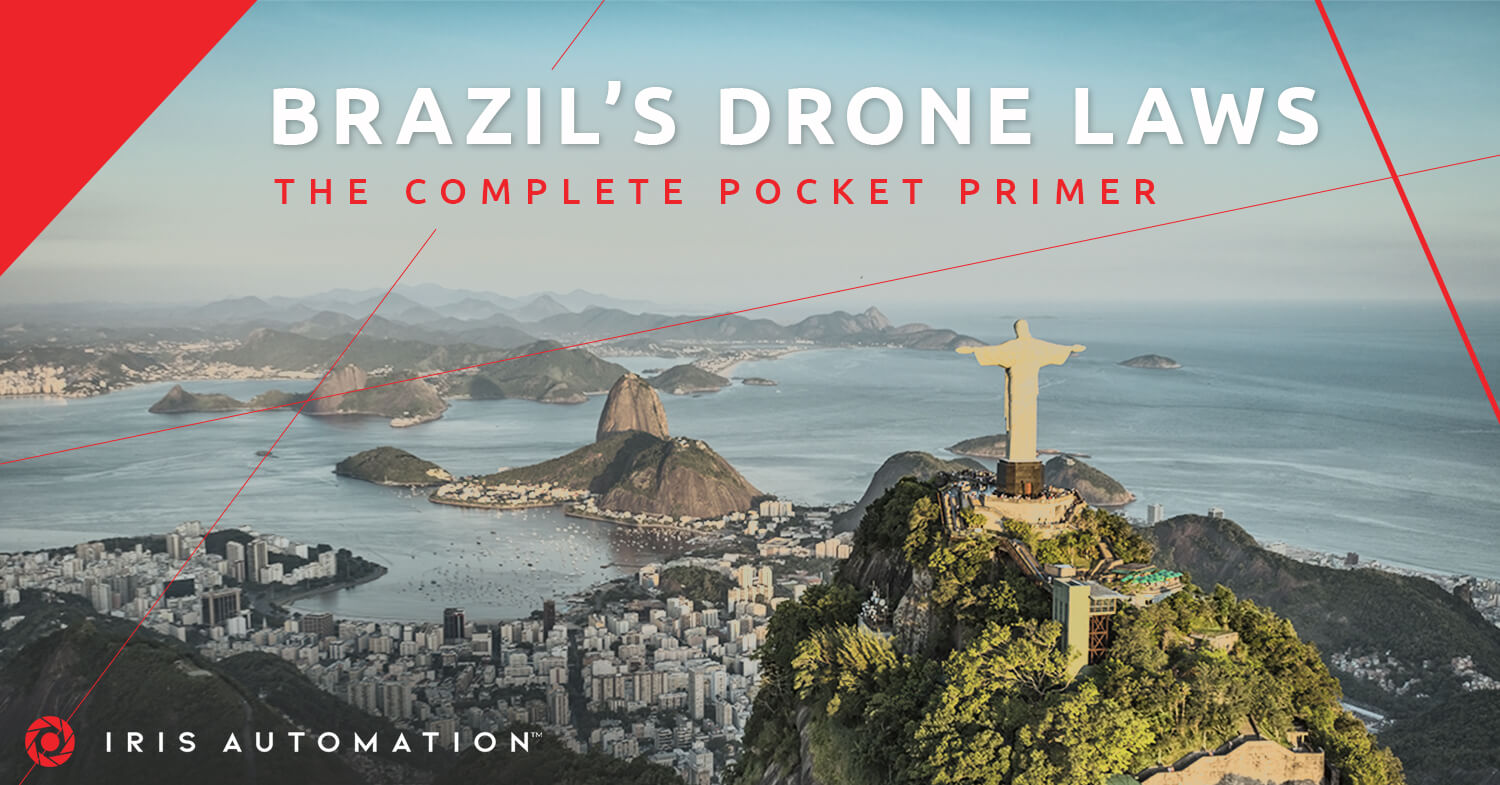Who hasn’t dreamed of jumping into a truck, heading out into the Brazilian wilderness, and flying a drone over the lush tropical rainforest?
Truth be told, Brazil offers some of the most beautiful natural scenery in the world, making it a drone lover’s paradise.
Just like any other country, though, you have to follow the rules when operating a drone in Brazil. Otherwise, you could run into trouble.
Keep reading this post to learn more about some of the major things that you should keep in mind if you’re interested in safely operating a drone in Brazil.
What Is a Drone Anyway?
Before we dive into this post, let’s take a look at a quick definition of a drone. A drone—or unmanned aerial vehicle (UAV)—is a pilotless aircraft that a hobbyist or professional controls with a ground-based controller.
Drones come in all sizes—from small crafts to large ones. They can be used for a variety of purposes too, from small-scale aerial photography and video projects to commercial deliveries and agricultural use cases.
Flying a Drone in Brazil
Just like in many other countries, it’s legal to own and operate a drone in Brazil. However, there are some important rules to be aware of in order to avoid fines and other penalties.
Age
Sorry, kids—you have to be at least 18 years old to operate a drone legally in Brazil. Underage drone operation is an offense that may result in penalties or punishments.
This may seem trivial, but drones can be dangerous, especially if you don’t know what you’re doing. So you’ll have to wait until you’re 18 to fly one in Brazil.
Line of Sight
Drone pilots are also expected to adhere to strict visual line of sight requirements when flying UAVs in Brazil.
Just as the name suggests, this means that you have to be able to see the drone from where you’re controlling it. If the drone disappears from your line of sight—such as if it goes behind a building or mountain, for example—it can be difficult or even impossible to fly it, increasing the likelihood of an accident. For this reason, all users are expected to adhere to line of sight requirements.
All this said, beyond visual line of sight (BVLOS) is an emerging use case for drones. In most countries, BVLOS requires special permissions from the National Civil Aviation Agency (ANAC) of Brazil.
Weight Restrictions
You don’t have to register small drones that weigh under 0.55 pounds (250 grams). However, you need to log anything that weighs more than 0.55 pounds (250 grams) in the ANAC System for Unmanned Aircraft (SISANT). In addition, the drone’s ID must be visible on the UAV.
Insurance
If you’re flying a drone that weighs more than 0.55 pounds (250 grams) in Brazil, you’ll need special insurance that covers damage to other people or property. For this reason, flying a drone without insurance in Brazil isn’t recommended.
Location
Common sense is also important when flying a drone in Brazil. You’re not allowed to fly a drone over military facilities, prisons, or critical infrastructure. Doing so will most likely result in your drone being confiscated. You may also face strict penalties, including fines and maybe even imprisonment, though this shouldn’t come as much of a surprise.
Generally speaking, you should also avoid flying a drone around private property unless you have explicit permission to do so. Flying a drone over private property is illegal.
What’s more, any drone exceeding 0.55 pounds (250 grams) must maintain a distance of at least 98 feet (29.87 meters) from people or buildings. And if you’re within three to five miles of an airport, you can only fly at a height of 100 feet (30.48 meters).
Beyond this, the maximum altitude for flying a drone is 400 feet (121.9 meters). Remember that airspace is governed by height and geographic distance. Know the local rules to avoid running into other crafts or creating complications, and you’ll do just fine.
Know the rules to avoid running into other crafts or creating complications, and you’ll do just fine.
Commercial Drone Use in Brazil
In addition to following the other regulations and rules, commercial drone use requires approval from Brazil’s National Civil Aviation Agency (ANAC). While the process might be long and require a lot of effort, you can secure approval for commercial purposes if you’re willing to be patient. For more information on how to obtain a commercial drone permit in Brazil, check out their website.
Brazil Drone FAQ
Do You Need a License to Fly a Drone in Brazil?
Licensing is required for certain types of drone operations in Brazil. You’ll need a permit if your drone weighs 55 pounds (~25kg) or less and you want to fly 400 feet (Class III) (121.9 meters); if the drone is between 55 pounds (~25kg) and 330 pounds (~147 kg) and you want to exceed 400 feet (Class II) (121.9 meters); and if the drone exceeds 330 pounds and you want to fly above 400 feet (Class I) (121.9 meters).
You’ll need to obtain a license for Class I, Class II, or Class III permits. In addition, Class I and Class II pilots will need an Aeronautical Medical Certificate from ANAC.
Are Drones Popular in Brazil?
Drones are growing increasingly popular in Brazil. As of January 2020, 76,865 drones were registered in Brazil—an increase from just 30,087 in 2017. Drones are becoming common as they continue to be more available and more affordable to the public. Looking to the future, civilian drone use should continue to increase in 2021.

Is It Safe to Fly a Drone in Brazil?
There’s no straightforward answer to this question. The most important thing is to know how your drone works. It’s also important to be familiar with the location where you’re operating. Remember that Brazil is a massive country, with varying types of weather and environmental conditions that could impact drone performance and stability.
To stay safe, make sure you have a solid understanding of your craft and your environment before you attempt to operate a UAV in Brazil. That way, you can avoid running into trouble.
Can You Fly a Drone in Populated Areas in Brazil?
Back in 2017, ANAC approved the Brazilian Regulation of Special Civil Aviation, which prohibits drones from flying in and around populated areas. In other words, you can’t fly a drone within 100 feet (30.48 meters) of people without their consent in Brazil. Ostensibly, this keeps people safe.
In addition, this regulation restricts drones from carrying people, dangerous objects, or animals.
Are Autonomous Drones Allowed in Brazil?
Autonomous drones are UAVs where the remote pilot isn’t able to intervene during flight. These types of drones are currently illegal in Brazil.
About BVLOS Regulation
Earlier in this piece, you found out that Brazil requires civilians to adhere to a visual line of sight policy. That said, you may be able to get a beyond visual line of sight (BVLOS) permit from ANAC. But these can be very difficult to obtain. BVLOS permits typically require users to explain how they’ll mitigate risk and maintain safety to surrounding people and areas.
If you’re interested in obtaining a BVLOS waiver, make sure to read this first. It can help make the process easier.
Brazil is an incredible place to fly a drone.
The Bottom Line
Brazil is an incredible place to fly a drone. Just remember to do it safely and with the above-mentioned regulations in mind. That way, you can avoid running afoul of the law and have a ton of fun flying a drone in a beautiful country.
For more information about how Iris Automation can help you fly drones safely all around the world, contact the team today.
This post was written by Justin Reynolds. Justin is a freelance writer who enjoys telling stories about how technology, science, and creativity can help workers be more productive. In his spare time, he likes seeing or playing live music, hiking, and traveling.

